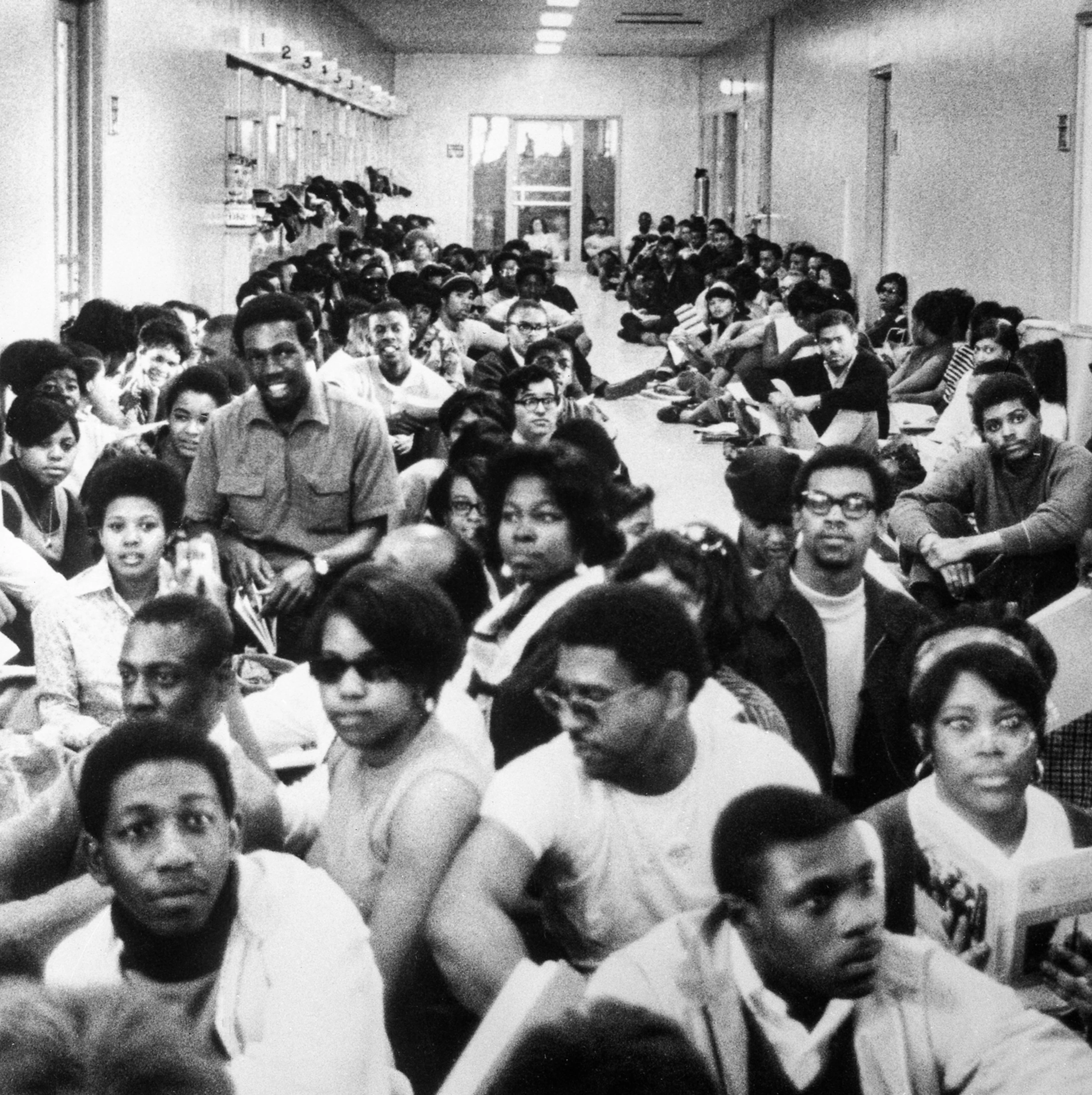Photo by Bettmann Collection/Getty Images
From ship revolts to maroon communities, from abolition to civil rights, from Black Power to Black Lives Matter, through the intellectual labor of Anna Julia Cooper, Carter G. Woodson, and W.E.B. Du Bois, the major goal of Black Studies has been strategic action to maintain the dignity and humanity of Black people.
As Cedric Robinson maintains in his conception of the Black radical tradition, this effort not only mounts resistance against structures rooted in slavery, imperialism, and capitalism, but asserts an ontology (cultural traditions, beliefs, values).
Focused on self-determination, Black radicalism, and Black pride, university students from the 1960s demanded that administrators address the lack of Black culture on campus and within the curriculum.
Civil rights activist Malcolm X believed that Black students were the ones to bring radical change to their universities and the United States. His call to college students was “to launch their own independent studies of the race problem” so they could devise an “action program geared to their thinking.” Malcolm X viewed young people as a vanguard of revolutionary force.
Student organizations invited Malcolm X to speak on campus. At Michigan State University, Ayo Azikiwe, leader of the African Student Association and son of Nigerian President Nnamdi Azikiwe, invited Malcolm to speak in 1962. One of Malcolm’s most famous campus visits was in 1961 at Howard University, where he debated civil rights activist Bayard Rustin. Kwame Ture, a Howard student then known as Stokely Carmichael, sat in the front row.

Photo by Bettmann Collection/Getty Images
Ture and the student body were left amazed after the debate between Malcolm and Rustin. Ture, who became chairman of the Student Non-Violent Coordinating Committee (SNCC) in 1966, is seen here participating in the Mississippi Freedom March, during which he called for the pursuit of “Black Power.”
Ture’s exposure to Black civil rights leaders, including Malcolm X and many others during his time as a student, provided a foundation to his radical activism, and he became the symbol of Black student activism. The work and tragic murders of civil rights leaders created a mass eruption of Black consciousness at colleges and universities across the country.
Student activists influenced three sites: the local campus, elite institutions, and the institutions that set policy for college and universities. In 1968, after a diverse, student-led protest, San Francisco State College, now San Francisco State University (SFSC), founded the first Black Studies Department, now known as the Africana Studies Department.
In this photo from November 18, 1968, at SFSC, students and faculty can be seen during a public convocation discussing student demands. These included separate facilities on campus, Black Studies curriculum, admitting more Black students, faculty, coaches, athletes, and administrators. They were engaged in both study and praxis.

Photo by Garth Eliassen/Archive Photos/Getty Images
Students and alumni from various Historically Black Colleges and Universities (HBCUs) played a major role in the Civil Rights Movement.
For instance, SNCC was founded in 1960 after Ella Baker, Shaw University alumna, and other Black students in North Carolina organized sit-ins challenging segregation in public spaces. Sisters Joyce and Dorie Ladner, Tougaloo College students, were organizers in SNCC and worked alongside Medgar Evers. These are just a few examples of student activists at work to address issues on campus, in their communities, and throughout the nation.

Photo by Bettmann Collection/Getty Images
Black students across the United States protested by occupying buildings, listing demands, and launching rallies to ensure that higher education was more relevant to their history, culture, and needs. HBCUs like Howard also addressed the needs and aspirations of Black college students in their national-level fight against predominantly white university administrations that did not include Black Studies in their curricula.
From March 19-23, 1968, as pictured in these two photos (above and below), Howard students seized the Administration Building. Students insisted on changes in the student disciplinary policy and that courses be offered in African American Studies as two conditions for vacating the building. 1,000 students held a rally in front of Douglass Hall, again pushing for a Black Studies curriculum. The facial expressions of students in the photo above showed that they were unified and unruffled. Despite missing class, students still found time to study.

Photo by Bettmann Collection/Getty Images
As an academic discipline, Black Studies was created out of student and faculty activism. As several Africana Studies programs developed after the 2020 protest against the murders of George Floyd, Ahmaud Arbery, and Breonna Taylor, it is important to understand the history of the discipline. Ture, Newton, and others are examples of how Black Studies contributes to the freedom struggle inside and outside of the university.
The same activism and organizing exists with the youth and university students today. Students across the United States continue to challenge their administrations and policies. Whether graduate students at Columbia University demanding stipend increases, Northwestern University students attempting to abolish campus police, or Howard students sleeping in tents to address housing issues, the struggle continues.
Black Studies goes beyond the four walls of the university. Black Studies is a livelihood that is grounded in how we connect to our communities and how we struggle collectively towards liberation.

Learn More:
For additional reading on student activism and the emergence of Black Studies:
Gregory Carr, “What Black Studies Is Not: Moving from Crisis to Liberation in Africana Intellectual Work,” Socialism and Democracy 25.1: 178-191.
Abdul Alkalimat, The History of Black Studies (London: Pluto Press, 2021).
Joshua M. Myers, We Are Worth Fighting For: A History of The Howard University Student Protest (New York: NYU Press, 2019).
Ibram Kendi, The Black Campus Movement: Black Students and the Racial Reconstitution of Higher Education, 1965-1972 (London: Palgrave Macmillan, 2012).





